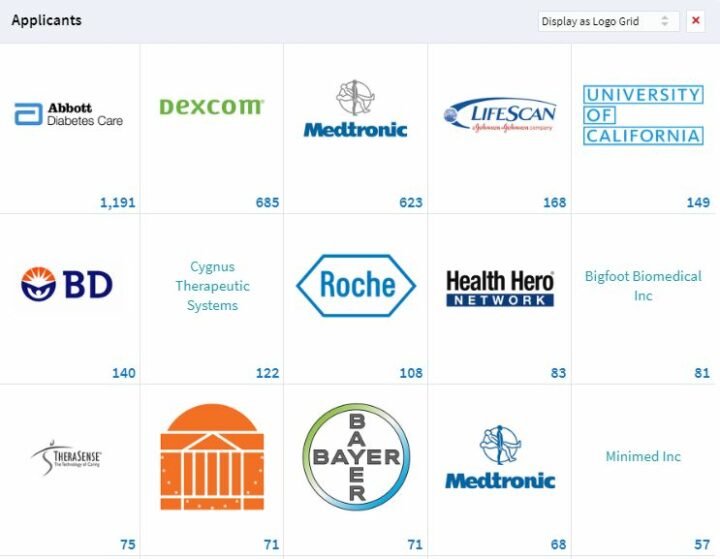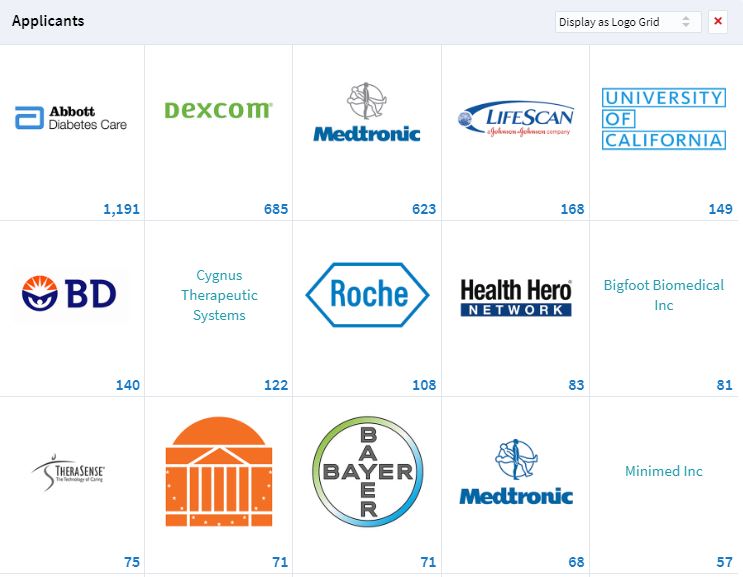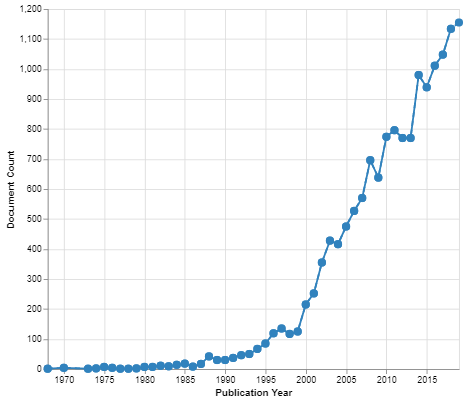Recently, at Viromii we have been working with a new type of sensor for glucose monitoring. Specifically, we are performing a technology-transfer project with the aim of transferring the new sensor to a glucose monitoring company who can implement it in their products and provide a higher value to diabetes patients. Here, we want to share some interesting facts we have encountered.
Glucose monitoring is a really interesting sector, and while performing the project we have seen that glucose monitoring is a vibrant area; many companies are working on this field and many new technologies are being developed. The fact that this is such a crowded area makes sense, as the market for glucose monitoring devices will reach 17.8 USD billion by 2026, growing at a 7.1% CAGR. That is why we can see rapid growth in patent activity in the field, with big and widely-known corporations being in the top places on patent applications.
Fig 1. Patent applicants in the field of “glucose monitoring”.
Glucose monitoring devices are used by diabetes patients, especially by the ones who suffer from diabetes mellitus type 1, but also by patients with a highly developed diabetes mellitus type 2 to continuously control their glucose level and decide on the food intake and insulin dosage.
Diabetes is on the rise, having doubled in 30 years with a continue growing expected. While in 1980 prevalence was 4.7%, in 2017 was 8.5%, with approximately 460 million diagnosed with the disease. Besides genetics, family history and age, parameters that cannot be changed, the likelihood on becoming diabetic increases with behaviors like unhealthy diet and sedentary life. Sadly, these are widespread behaviors and more and more people will suffer from diabetes in the upcoming years.
Fig 2. Number of patent applications/year in the field of “glucose monitoring”.
Companies know these trends, and diabetes is a growing market where there are many opportunities and competition. This competition is pushing companies to innovate in order to differentiate from the rest, and the way companies are trying to innovate in the glucose monitoring space is rather interesting, being noninvasive glucose monitoring the hottest area. One of the most famous companies in the field, and with one of the biggest patent portfolio, is Verily (Google), who partnered with Alcon (Novartis) for developing glucose monitoring contact lenses. There was excitement around this, but in 2018 Verily paused the project, stating:
“Our clinical work on the glucose-sensing lens demonstrated that there was insufficient consistency in our measurements of the correlation between tear glucose and blood glucose concentrations to support the requirements of a medical device”
Verily is one of the most famous companies in the noninvasive glucose monitoring field, but, there are companies approaching this subject differently, some of them showing positive results:
- Noviosense: is developing a tear glucose sensor with promising results. The company has performed a phase 2 clinical trial with positive results and a second clinical trial with 24 patients is being carried out.
- Occuity: is developing a non-contacting glucose monitoring device based on optical techniques. The company presents the technology as a “mobile phone sized meter that the user simply looks into, presses a button and a reading is taken from the eye”. The company has performed clinical studies with 30 volunteers, reporting positive results.
These companies are trying different approaches and even though bringing these types of innovations to the market requires big investments, the reward for the company that provides an accurate and reliable solution for non-invasive glucose monitoring could be huge.
From Viromii we will keep an eye opened and will keep track of news and potential newcomers in the field; now it is just a matter of time that a company will come up with a ground breaking technology that will improve substantially the life of patients with diabetes.
References:



